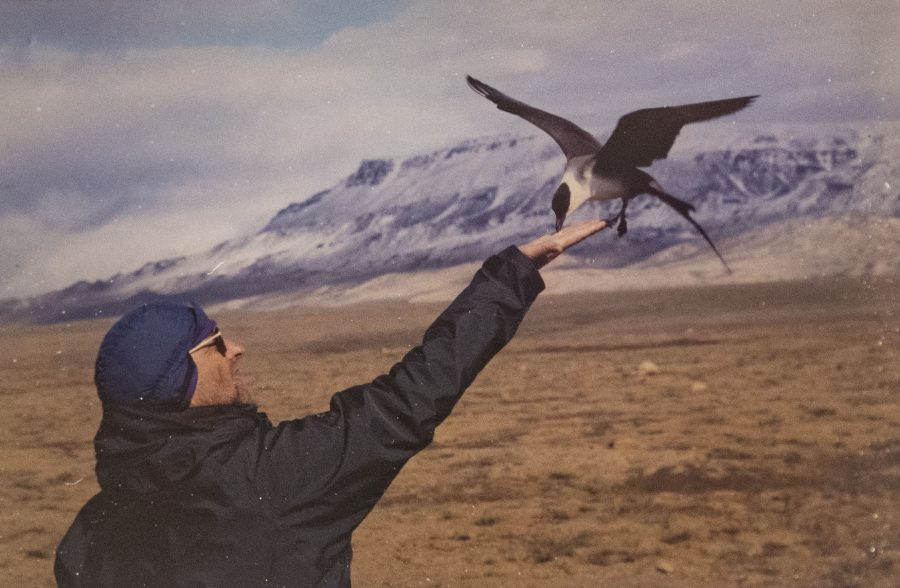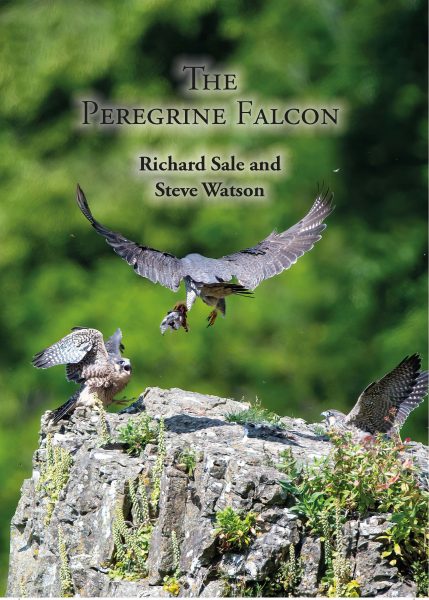Gehan de Silva Wijeyeratne interviews Richard Sale and Steve Watson on their book ‘The Peregrine Falcon’ published by Snowfinch Publishing.
Reproduced with permission from the Quarterly Newsletter (Issue No. 269, June 2023) of the London Natural History Society.


Richard Sale has co-authored several books on raptors including the Poyser ‘The Gyrfalcon’ and ‘The Snowy Owl’. He has also co-authored self-published books on ‘Steller’s Sea Eagle’, and ‘The Eurasian Hobby’. He also wrote the New Naturalist title ‘Falcons’ and authored the self-published ‘The Common Kestrel’ and ‘The Merlin’. He was awarded the ‘US Wildlife Society Book of the Year’ in 2006, 2019 and 2021. Steve Watson has conducted a 40-year study into the Peregrine Falcons at Symonds Yat and is a Trustee of the Gloucestershire Raptor Monitoring Group CIO, Raptor Aid CIO and a committee member of South West Peregrines. He produces and fronts presentations on Peregrines and Goshawks for RSPB groups and wildlife organisations throughout the UK.
How did this book come about and how many years was this book in the making?
The book’s gestation period was a long one and the subject first arose some years after Steve tracked Richard down in 2016 and invited him for a raptor talk over caffeine in a local hostelry. We both live in Gloucestershire and are passionate about raptors and particularly falcons, so Steve thought it would be interesting to meet up.
We are very different in many ways. Richard is a scientist by training, an astrophysicist in fact, and is also an established and esteemed raptor writer with three US Wildlife Society book of the year awards to his name. He is something of a polymath and has written definitive and highly regarded books on varied subjects such as mountaineering and the Arctic in addition to his long list of raptor books. Steve, on the other hand, is a retired Chartered Accountant with a penchant for data, charts and all things Excel, has conducted a 40-year study of the Symonds Yat Peregrines and is, by his own admission, in thrall to this most dynamic and charismatic of raptors and strives to observe them as frequently as possible.
Having written ‘The Eurasian Hobby’, The Common Kestrel’ and ‘The Merlin’ I gently pressed Richard on the possibility of him completing the set of four common UK falcons. At first he was reluctant on the basis that there were already many books ‘out there’ on Peregrines and it took several years before the idea was mooted again. In the autumn of 2021, Steve, with some trepidation, ventured once again to float the idea of writing a Peregrine monograph and the response was not altogether dismissive and so eventually by late 2021 it became de facto a work in progress.
‘The Peregrine Falcon’ contains a great deal of science and references to all relevant scientific papers written up to the autumn of 2022 and includes a detailed section of our current understanding of the biology and capability of the Peregrine eye, some interesting figures on the nasal passages, flight dynamics and we take a close look at humeri comparisons for all four common resident and migrant UK falcons. We take a fresh look at UK population data from the 1930’s up to the present day and present new visualisations that provide an immediate understanding of spatial and temporal UK Peregrine population movements over the last 75 years or so. It includes information on all 19 sub-species and will therefore be of interest to worldwide Peregrine adherents and also covers the historical relationship between man and falcon, falconry, recently excavated fossil records of dinosaur antecedents, some detailed analysis of our current understanding of Peregrine biology, the evolution of falcons, flight characteristics, hunting strategies, breeding behaviour, UK and world population, migration and interactions with other species.
What do you’ll want to achieve with this book?
The aim of the book is to bring together a comprehensive up-to-date information resource for all things ‘Peregrine’ that is accessible and of interest to the expert and novice alike.
Is there a fun fact or something amazing you learnt during the writing of the book?
Several things of note came to our attention whilst writing the book. Both Richard and Steve have taken the view, based on observation, that Peregrines’ eyesight is at least a factor of 10 greater than human vision, but yet the science community in the main would seem to suggest a factor of 2. When we discussed this with a top avian veterinary surgeon, who must not be named (!) and quoted what we believed to be the scientific consensus, his response came in one word; ”Twaddle”. At that point, Steve nearly spilt his coffee over the rather nice Indian rug that adorned our host’s floor! It felt something like vindication.
In carrying out this research, we have outlined the fundamental structures of the eye and questioned how each component might impact overall visual acuity. There remains scope, in our opinion, for a reconsideration of the relative acuity of Peregrine and human vision.
Based on an amalgamation of resighted ringed breeding Peregrines (data from BTO and Ed Drewitt) for the period 1994-2022 we can infer that a high proportion of UK human structure breeding Peregrines originated from Europe.
Were there any memorable moments during the course of writing this book?
There was a fist-bump moment when the authors first interrogated the recording system at Evesham Bell Tower to find that the birds had, in fact, laid eggs in the new nest box. A wonderful moment and by no means guaranteed.
For anyone who wishes to pursue this topic more, are there any online resources you would recommend
We would recommend FaB Peregrines twitter account @FaBPeregrines, BTO website Welcome to the British Trust for Ornithology | BTO – British Trust for Ornithology GRMG website G.R.M.G – Gloucestershire Raptor Monitoring Group (glosraptors.co.uk) and Raptor Aid Raptor Aid https://www.raptoraid.com/

